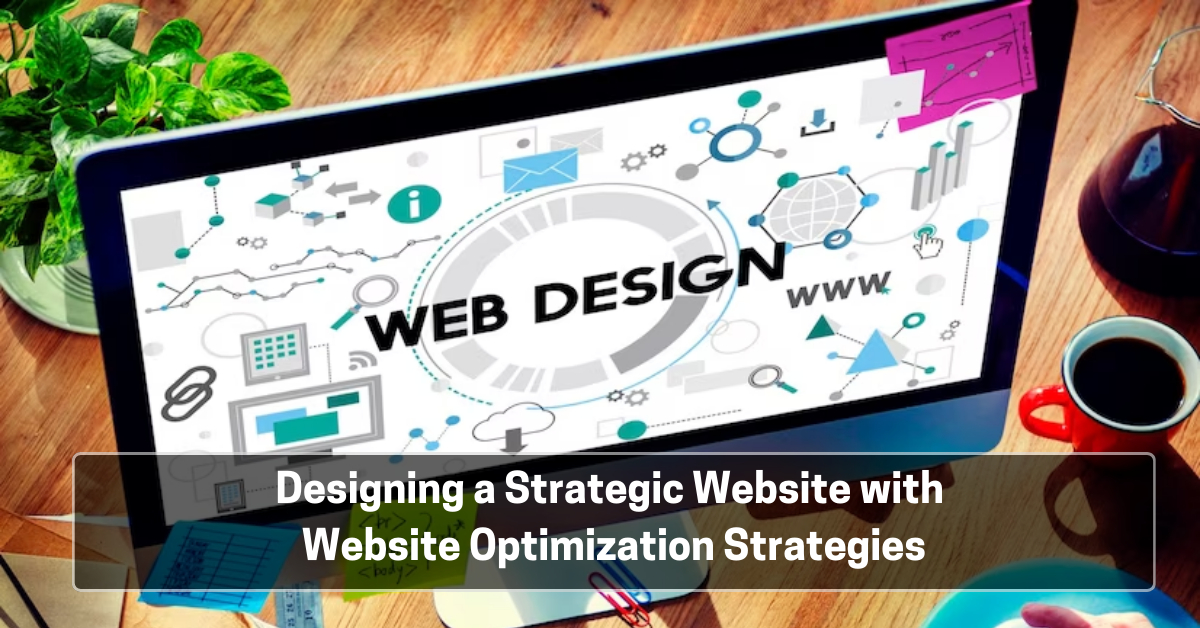Designing a Strategic Website with Website Optimization Strategies


While most people think that a website is just like what it is, a website, in reality, should mark a change in the way your company does business. That’s why when you’re exploring the potential of your Internet presence; you actually should be developing a unified theory to hit all of your company’s targets.
Everyone wants a great-looking website, something that looks high-end, state-of-the-art. Let’s say your organization sells sports apparel. You want to use social media and video clips to push your products. One problem: you don’t have a way for people to actually buy your stuff online.
Or let’s say you are a member of the service community. You rely on clients who need a specific service. Your website is interactive. It even has a chat component. This time the issue is that no one in the office knows how to use this real-time communication app.
Just by concentrating on the sizzle, you forget to buy quality food and neglect the requirement of a person who can arrange the table and serve the meal. Same with websites; you need to be strategic and thorough.
First Step
Your organization’s goals need to be identified before you rush head-strong into design. Of course you’re looking for an eye-catching website that’s functional. But what is your businesses objective? What’s the actual purpose of the site? Brainstorm with your managerial staff. The road will be long if you don’t know where you’re going.
Audience
Knowing the demographics of your client-base is a guiding light. Consider your market’s gender, age, how will they access your site (a permanent location or a mobile device), how much money they make, etc.
All such information will steer you to the point where you can foresee and decide the overall look of your website. Are most of your clients over the age of 60? Then a rock-star, video game look should be off-the-table. For this demography, it would probably be a good idea to use easy-to-read fonts. Be sure about who will be using your website.
Beyond Purpose
What’s the best way to align your goals and audience with your design? Let’s use the example of a first-time visitor to your website. They’re fickle. They may surf-in and jump-out quickly. You want to keep them on-board for more than just a couple of seconds. Try this:
- Don’t hide your registration link. Make it big and easy-to-find
- Make the sign-up link accessible from all pages
- Make any online form simple. You can always get more information from the client later
- Incorporate images that can be enlarged to show your products
- Assemble screenshots of what the client can expect once they buy your product or service
- Give the user a tour of a particular service that shows how you can assist them
- Embed videos of your products or services
Metrics
Now that your website is “live,” you need to find out what works and what doesn’t. If you’re not reaching your goals through the website, some tweaking may be necessary. Using a free service like Google Analytics will supply you with the raw data as to how people are using your website.
Understanding the data is not child’s play. You don’t want to be able to rattle-off the chapter-and-verse of every page view. You do want some way to measure those central goals you identified earlier.
Common Sense
Everything has a purpose, even your website. It’s very easy to get wrapped-up in design. Resist the temptation and stick to the basics of any successful organization. Focus on your brand, your target audience, the simplicity of navigation. Remember, sometimes the prettiest flower in your garden is the most poisonous. Using common business-sense will help you avoid dangerous pitfalls.

